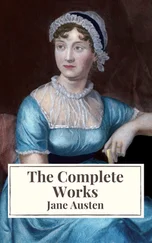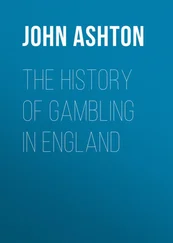John Ashton - The Fleet. Its Rivers, Prison, and Marriages
Здесь есть возможность читать онлайн «John Ashton - The Fleet. Its Rivers, Prison, and Marriages» — ознакомительный отрывок электронной книги совершенно бесплатно, а после прочтения отрывка купить полную версию. В некоторых случаях можно слушать аудио, скачать через торрент в формате fb2 и присутствует краткое содержание. Жанр: foreign_antique, foreign_prose, на английском языке. Описание произведения, (предисловие) а так же отзывы посетителей доступны на портале библиотеки ЛибКат.
- Название:The Fleet. Its Rivers, Prison, and Marriages
- Автор:
- Жанр:
- Год:неизвестен
- ISBN:нет данных
- Рейтинг книги:4 / 5. Голосов: 1
-
Избранное:Добавить в избранное
- Отзывы:
-
Ваша оценка:
- 80
- 1
- 2
- 3
- 4
- 5
The Fleet. Its Rivers, Prison, and Marriages: краткое содержание, описание и аннотация
Предлагаем к чтению аннотацию, описание, краткое содержание или предисловие (зависит от того, что написал сам автор книги «The Fleet. Its Rivers, Prison, and Marriages»). Если вы не нашли необходимую информацию о книге — напишите в комментариях, мы постараемся отыскать её.
The Fleet. Its Rivers, Prison, and Marriages — читать онлайн ознакомительный отрывок
Ниже представлен текст книги, разбитый по страницам. Система сохранения места последней прочитанной страницы, позволяет с удобством читать онлайн бесплатно книгу «The Fleet. Its Rivers, Prison, and Marriages», без необходимости каждый раз заново искать на чём Вы остановились. Поставьте закладку, и сможете в любой момент перейти на страницу, на которой закончили чтение.
Интервал:
Закладка:
In still older times it formed part of the great Middlesex forest, which was full of wolves, wild boars, deer, and wild oxen; but we find that, in 1252, Henry III. granted to Thomas Ive, permission to inclose a portion of the highway adjoining his mansion at Kentessetone. And in 1357, John of Oxford, who was Mayor of London in 1341, gave, amongst other things, to the Priory of the Holy Trinity, in London, a mill at Kentish Town – which, of course, must have been turned by the Fleet. The kind donor was one of the very few Mayors who died during his mayoralty.
It is said, too, that Nell Gwynne had a house in Kentish Town, but I can find not the slightest confirmation of the rumour; still, as there is a very good pen-and-ink sketch of the old house said to be hers, I give it, as it helps to prove the antiquity of Kentish Town, now, alas! only too modern.
And there was another old house close by the Fleet there, an old farmhouse known as Brown's dairy.
This old Farmhouse had, evidently, a nobler origin, for it was moated; and, in 1838, the moat existed on the east and north sides. It belonged to the College of Christ Church, Oxford, and was held of the Manor of Cantelows at a small fine. There was a good orchard, which at the above date (the time of its demolition) contained a large walnut tree and some mulberry trees. The building materials were sold for £60, so that it evidently had done its work, and passed away in the ripeness of old age.
The Castle Inn is said to have been the oldest house in Kentish Town, and there is a tradition that Lord Nelson once lived here, "in order that he might keep his eye upon the Fleet," and planted a sycamore in the garden.
Before taking leave of Kentish Town, I cannot help recording a legal squabble, which resulted in a victory for the public. — Times , February 12, 1841: —
"Court of Queen's Bench, Thursday, February 11, 1841 . (Sittings at Nisi Prius, at Westminster, before Lord Denman and a special jury.)
"This was an Indictment against the Defendant for obstructing a footpath leading from Pond Lane, at Hampstead, over Traitors' and Parliament Hill, to Highgate.
"The case lasted the whole day.
"The jury brought a verdict for the Crown, thus establishing the right of the Public to one of the most beautiful walks in the neighbourhood of the metropolis."
The Fleet babbled through the meadows, until its junction with that other stream which flowed from the pond in the Vale of Health at Hampstead, which took place where now is Hawley Street, and the united brook, or river, ran across what are now the Kentish, and Camden, Town Roads, and between Great College Street, and King Street; it then followed the course of the present road to King's Cross, passing by St. Pancras Church – which, originally, was of great antiquity, and close by which was a celebrated healing well, known as Pancras' Wells. These waters cured everything – scurvy, king's evil, leprosy, cancers, ulcers, rheumatism, disorders of the eyes, and pains of the stomach and bowels, colds, worms, &c., &c.
In the Church, and Churchyard, were interred many illustrious dead, especially Roman Catholics, who seem to have taken a particular fancy to have their remains buried there, probably on account of the tradition that this was the last church in which mass was celebrated. It was a favourite burial-place of the French clergy – and a story is told (how true I know not) that, down to the French Revolution, masses were celebrated in a church in the south of France, dedicated to St. Pancras, for the souls of the faithful interred here.
Many historical names are here preserved – amongst whom are Pasco de Paoli, the famous Corsican; Walker, whose dictionary is still a text book; the Chevalier d'Eon, respecting whose sex there was once such a controversy; Count O'Rourke, famous in the world of fashion in 1785; Mrs. Godwin – better known, perhaps, as Mary Woolstencraft – who also was married here; William Woollett, the eminent landscape engraver, a branch of art in which he may be said to have been the father; Samuel Cooper, whose miniatures cannot be surpassed; Scheemaker the younger, a sculptor of no small note. Nor in this campo santo was Music unrepresented, for there, amongst others, lie the bodies of Mazzinghi, who brought the violin into fashion here in 1740; and Beard, a celebrated singer in 1753. The river flows hence to Battle Bridge, or King's Cross, as it is now termed, forming in its way a sort of pond called "Pancras Wash," and running through a low-lying district called "The Brill." 17 17 See previous page .
This peculiarly unsavoury neighbourhood has now been cleared away, in order to afford siding room, &c., for the Midland Railway.
But Dr. Stukeley, who certainly had Roman Camps on the brain, discovered one in the Brill. He planned it out beautifully. Here were the Equites posted, there the Hastati, and there were the Auxiliarii. He made the Fleet do duty for a moat which nearly surrounded Cæsar's Prætorium, and he placed a Forum close by St. Pancras' Church, to the northward of which he assigned a Prætorium to Prince Mandubrace. Is it not true? for is it not all written in his "Itinerary"? and does he not devote the first seventeen pages of the second volume of that work, entirely to the Brill, assuring us of the great pleasure he received in striding over the ground – following, in imagination, the footsteps of the Roman Camp Master, who paced out the dimensions of the Camp?
CHAPTER IV
THAT it was countrified about this part of London, is shown by the accompanying Copy of an engraving, by J. T. Smith, of a view "near Battle Bridge." 18 18 See next page.
The etymology of Battle Bridge, which consists of only one arch, and now forms a part of the Fleet Sewer, is a much vexed question. At one time it was an article of faith, not to be impugned, that here, A.D. 61, was fought the famous battle between the Romans, under Suetonius Paulinus, and the Britons, under Boadicea, Queen of the Iceni, which ended so disastrously for the natives – eighty thousand of whom are said to have been killed. But there seems to be a doubt, as to whether this was the exact spot where this historical contest took place, for Tacitus makes no mention of the little river Fleet, which must then have been navigable for light and small craft, for an anchor was found, in its bed, at Kentish Town. He only describes it (Tacit. Ann. lib. xiv. c. 34) a spot of ground, "narrow at the entrance, and sheltered in the rear by a thick forest." No remains have ever been exhumed, nor have Roman, or British, relics been found near the spot.
In the first quarter of this century the Fleet, for the greater part of its time, ran placidly along, as we see by these two pen-and-ink sketches, taken at Battle Bridge. 19 19 See pages 41, 42.
But, occasionally, it forgot its good manners, and overflowed its banks, flooding portions of Kentish Town, Somers Town, and Battle Bridge, as we read in the Gentlemans Magazine , vol. lxxxviii. part i. p. 462, Saturday, May 9, 1818: —
"From the heavy rain, which commenced yesterday afternoon at six o'clock, and continued pouring incessantly till four this morning, Battle Bridge, St. Pancras, and part of Somers Town were inundated. The water was several feet deep in many of the houses, and covered an extent of upwards of a mile. The carcases of several sheep and goats were found near Hampstead Reservoir, and property was damaged to a very considerable amount."
There must have been a Mill here, for Stow tells us that in the reign of Edward VI. "A Miller of Battaile Bridge was set on the Pillory in Cheape, and had both his eares cut off, for seditious words by him spoken against the Duke of Somerset."
Читать дальшеИнтервал:
Закладка:
Похожие книги на «The Fleet. Its Rivers, Prison, and Marriages»
Представляем Вашему вниманию похожие книги на «The Fleet. Its Rivers, Prison, and Marriages» списком для выбора. Мы отобрали схожую по названию и смыслу литературу в надежде предоставить читателям больше вариантов отыскать новые, интересные, ещё непрочитанные произведения.
Обсуждение, отзывы о книге «The Fleet. Its Rivers, Prison, and Marriages» и просто собственные мнения читателей. Оставьте ваши комментарии, напишите, что Вы думаете о произведении, его смысле или главных героях. Укажите что конкретно понравилось, а что нет, и почему Вы так считаете.












